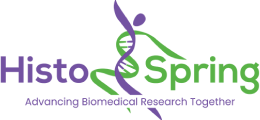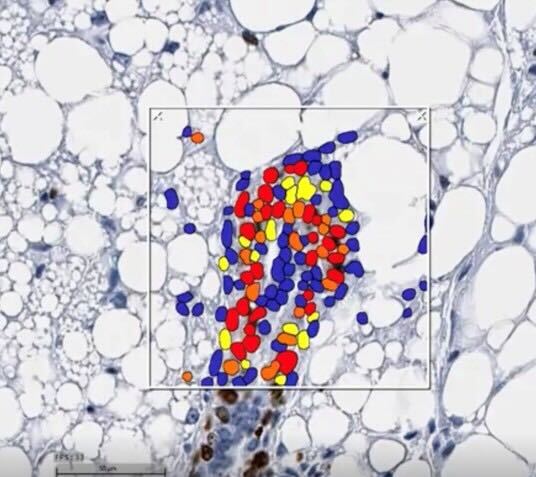Spatial biology is rapidly transforming how we understand disease, development, and therapeutic response. At HistoSpring, this transformation comes into focus with the RNAscope™ Multiplex Fluorescent Assay, a gold-standard technology from Bio-Techne/Advanced Cell Diagnostics (ACD) that now enables same-section RNA + protein detection—a breakthrough that preserves tissue morphology while unlocking new layers of insight.
On Wednesday, October 29 (12:00–1:00 pm) at UMass Amherst’s Institute for Applied Life Sciences (IALS), HistoSpring and Bio-Techne/ACD will host a Lunch and Learn showcasing how RNAscope™ chemistry, Leica BOND RX automation, and HALO AI digital analysis are opening new possibilities for translational and applied research.
Why This Matters
Traditional workflows often force researchers to choose between RNA or protein detection on separate sections—losing valuable spatial context. With the new protease-free RNAscope™ workflow, scientists can now visualize RNA transcripts and protein markers together, in the same tissue section, with unmatched sensitivity and clarity.
This means:
- Deeper phenotyping of immune cell populations
- More accurate profiling of tumor heterogeneity
- Quantitative outputs like single-cell counts, expression intensity, and spatial stratification
For oncology, immunology, and precision medicine research, the implications are profound.
The Technology in Action
RNAscope™ has already been published in over 13,000 studies, underscoring its role as the trusted standard for in situ RNA detection. The Multiplex Fluorescent Assay from Bio-Techne/ACD takes this further by enabling:
- Flexible panel design – up to six RNA or protein targets, or a combination of both
- Expanded co-detection – pair RNAs with IHC-validated antibodies
- Preserved morphology — Protease-free PretreatPro™ workflow maintains antigen integrity and tissue architecture
- Automation at scale – Leica BOND RX streamlines assay execution for reproducibility
At HistoSpring, these assays are paired with HALO AI digital software to transform stunning images into quantitative, reproducible data. Researchers can move beyond visualization to measurable outcomes—segmentation, cell density, expression analysis, and biomarker validation.
What You’ll See
The upcoming HistoSpring Lunch & Learn, hosted in collaboration with Bio-Techne/ACD, will highlight:
- How RNAscope™ has advanced to enable true spatial multiomics with RNA + protein co-detection
- How HistoSpring applies this workflow with Leica BOND RX and HALO AI for translational research
- Real data examples—showing tumor morphology, immune cell phenotypes, and multiplex RNA+protein imaging from the same section
A Preview of the Future
Spatial multiomics is no longer a future vision—it’s here, practical, and ready to be integrated into translational workflows. By bringing together world-class reagents (Bio-Techne/ACD), advanced instrumentation (Leica BOND RX), and digital pathology expertise (HistoSpring + HALO AI), researchers can move from tissue to insight faster, with greater precision, and on the same section.
RNAscope™ at HistoSpring isn’t just about generating beautiful images—it’s about producing reproducible, quantitative data that drives discovery forward.
Interested in attending in person or online? Register here.
#SpatialBiology #CancerResearch #ACD





















